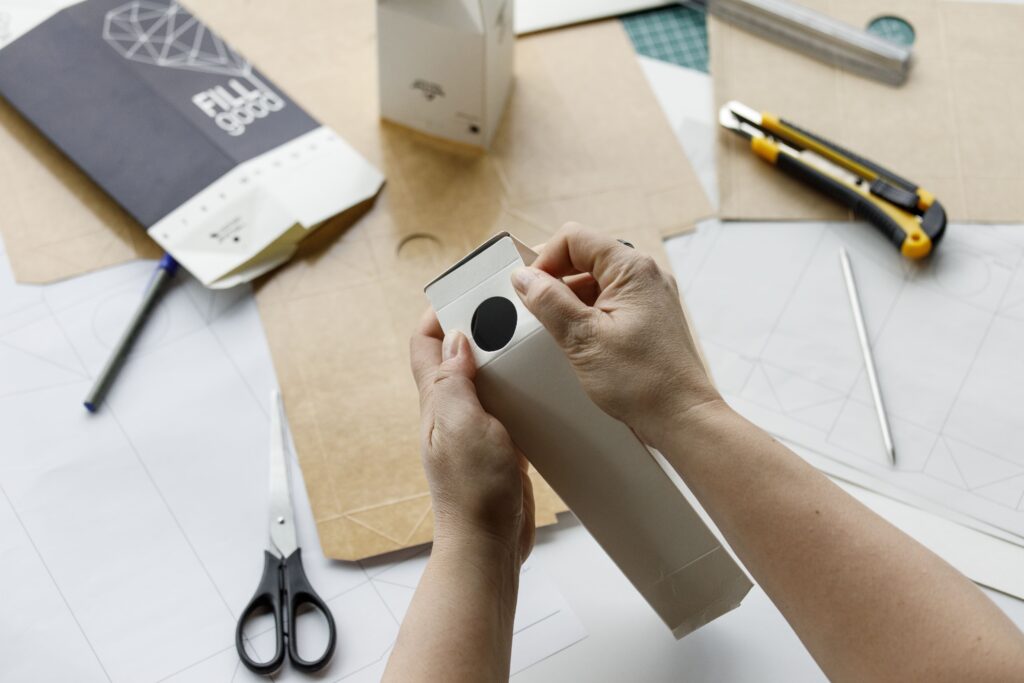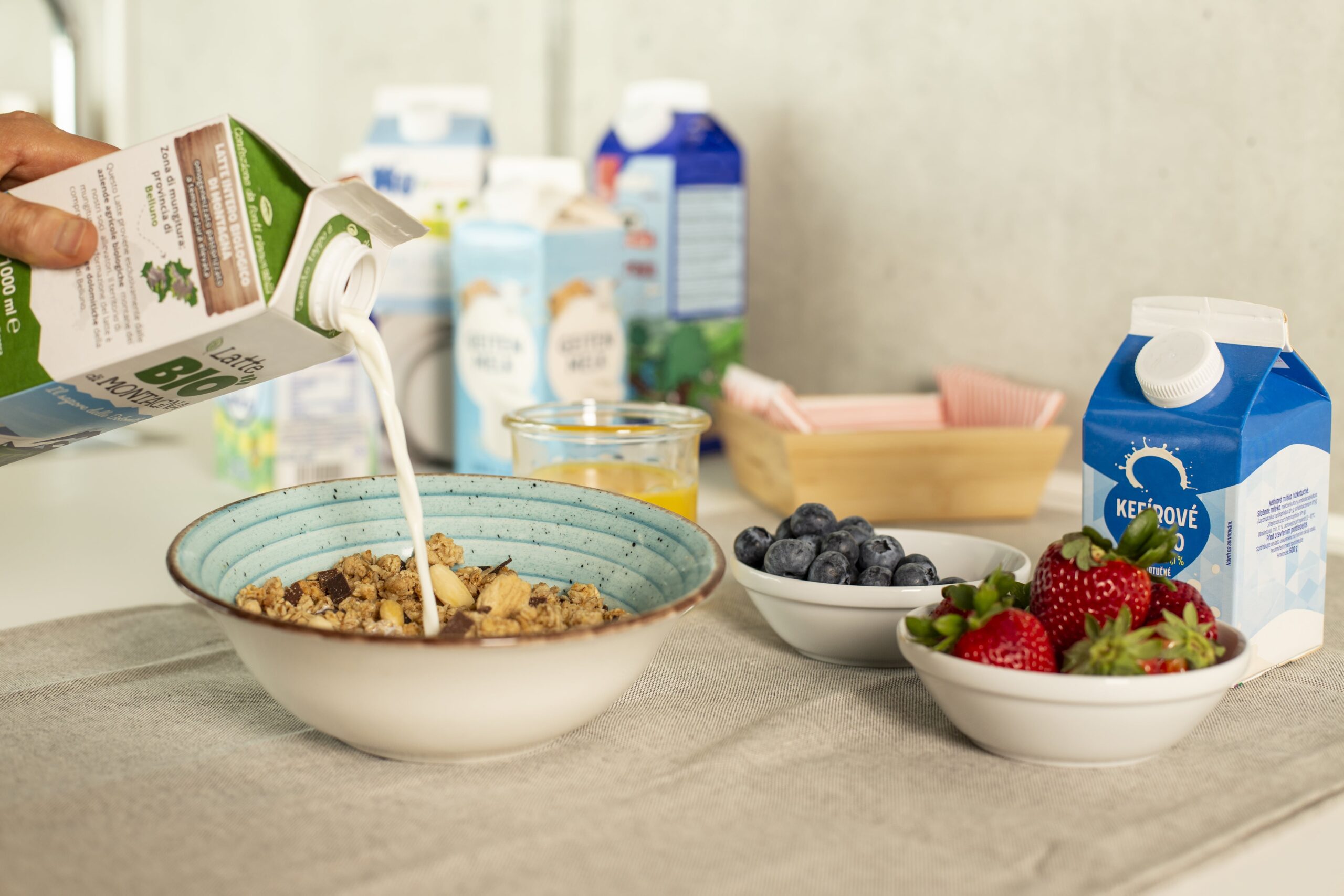Over the years, milk packaging has evolved in response to the product’s characteristics, industrial innovations, transportation methods, and brand competition, ultimately leading to the development of the Gable Top carton for milk. These changes highlight advancements in industrial techniques and reflect shifting consumer habits, with each packaging choice telling a unique story.
In the market, we have witnessed a diverse array of milk packaging options, including cartons, bottles, cans, and aluminum containers. While the decision to purchase milk often hinges on personal preference—especially concerning packaging formats—the variety available is truly extensive.

From Early Milk Distribution To Gable Top Carton
Until the late 1800s, milk was primarily distributed in metal containers. In terms of production volume, milk is classified as a commodity—standardized and widely accessible. However, unlike oil and wheat, milk poses unique challenges for storage due to its high perishability, which has driven producers to continuously innovate preservation and transportation methods over the years.
By the end of the 1800s, aluminum emerged as the first significant packaging solution for milk. Retailers would refill these cans daily, transferring the bulk liquid into consumers’ containers, thereby facilitating a more efficient distribution process.
The Emergence of the Glass Bottle
As the 1800s came to a close, the introduction of the glass bottle represented a significant milestone in the evolution of milk packaging. Created in 1886 by Harvey and Samuel Bernhart, partners of the American pharmacist-inventor Harvey Thatcher, the “Common Sense Milk Bottle” set a new standard in the industry. This bottle featured a Bordeaux-style design with a low, wide neck, a design that continues to be utilized by various Western companies today. It not only facilitated practical home consumption but was also ideal for refrigeration, simplifying transportation and ensuring safer bottling.
However, despite its many advantages, glass remained a fragile material. Companies soon recognized the necessity of developing alternative solutions to guarantee safe transportation over long distances while preserving the quality of the product.
Advancements in the 20th Century: The Introduction of the Carton Gable Top
In the early decades of the 1900s, despite challenges posed by wars, there were numerous efforts to refine milk packaging techniques. A significant breakthrough occurred in 1950 with the introduction of the Gable Top carton to the market.
Originally stemming from a prototype developed by John Van Wormer in 1915, the carton Gable Top has since become the most widely used format for milk distribution. Constructed from a single sheet of waxed cardboard, it is designed for easy folding, filling, and sealing by manufacturers, resulting in minimal transportation and logistics costs.
The Gable Top carton transformed milk packaging into a symbol of mass consumption. It offers a more economical solution, is well-suited for home use, and is more durable than glass. Furthermore, it effectively shields milk from sunlight, extending its shelf life and providing cost savings for families.
The Evolution of Milk Packaging Materials
Since then, the milk market has evolved into a dichotomy between practical disposable cartons and more durable glass containers. While various new materials and reinforcements have been introduced, the risks of altering taste and increasing costs have persisted.
Over the years, the Gable Top carton has also evolved, offering several advantages: it provides a premium value to products, differentiates production, offers consumers a practical and easy-to-carry container, and ensures maximum food safety.
Embracing Sustainability in Milk Packaging
Since the late 1990s, the range of packaging formats has expanded significantly. Brand competition has increasingly shifted toward sustainable materials that meet the growing demand for reducing packaging’s environmental impact.
Some companies introduce specific and innovative solutions, while others cater to more traditional segments. Today, we encounter a diverse array of packaging options, including bagasse (a material derived from sugarcane), whey-based containers, and conventional glass, plastic, and cardboard formats. The choice of milk packaging is influenced by our consumption habits and the evolving landscape around us.
The evolution of milk packaging highlights technological advancements and reflects changing consumer preferences and heightened environmental awareness. As we progress, the challenge will be to strike a balance between convenience, safety, and sustainability in the packaging solutions we adopt.
Carton Gable Top: An Excellent Example of Sustainable Innovation
These containers are not only a step towards a greener future, but they also align with the growing emphasis on environmental responsibility. Over time, the Gable Top carton has evolved significantly, with companies researching to make them increasingly safe and less impactful. This includes the use of FSC-certified paper and the adoption of new materials, such as biobased options, to enhance sustainability.
Galdi, along with its American subsidiary Galdi Inc, is committed to driving innovation with this focus in mind. Our production processes continually evolve to incorporate sustainable practices, ensuring that they remain at the forefront of providing environmentally conscious packaging solutions.

